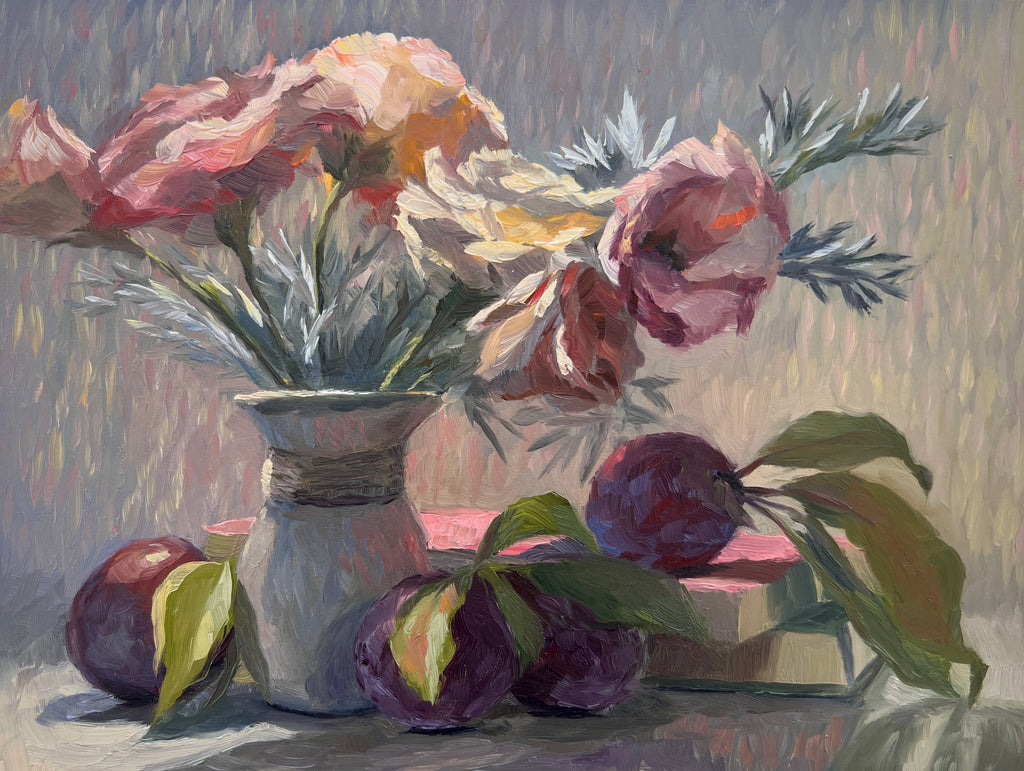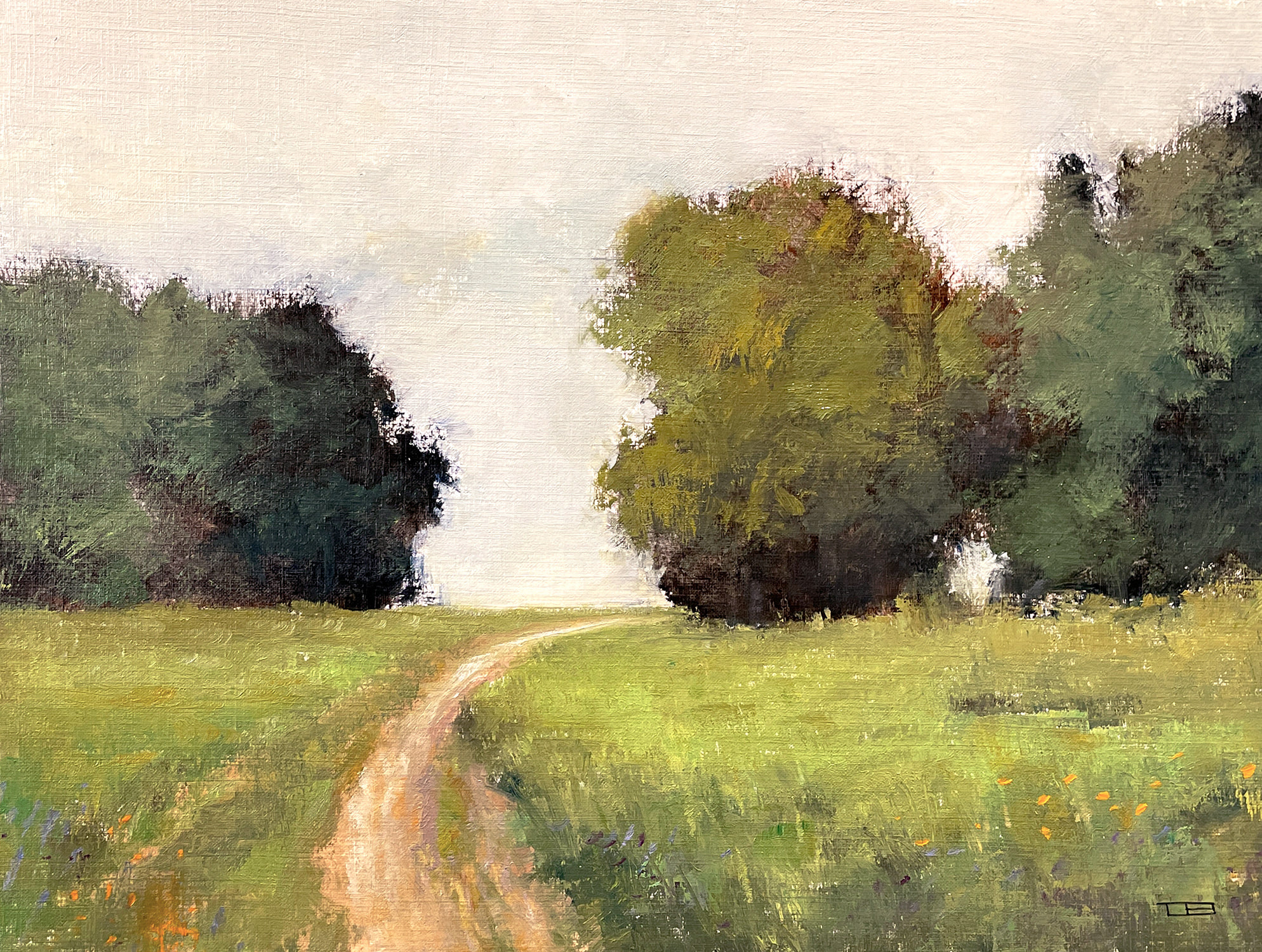Original Botanical and Object Oil Paintings for Sale
Original Botanical and Object Oil Paintings for Sale
Blog Article
Checking out Everything About Oil Paints: An Overview to Comprehending Their Charm and Value
Oil paints have actually astounded target markets for centuries, using a peek into the artistic mastery of numerous periods. Their rich background is linked with ingenious methods and profound emotional expression. Understanding the materials and approaches behind these artworks can improve recognition. Furthermore, the market for oil paints offers possibilities for investors and enthusiasts alike. As one discovers this interesting world, the inquiry occurs: what makes an oil painting really useful?
The History of Oil Paint: A Journey Via Time
Oil paint has origins that date back to old times, it genuinely grew during the Renaissance, when artists discovered its convenience and abundant shade capacity. Early examples can be mapped to the 7th century, with methods progressing significantly throughout cultures. The tool became famous in Northern Europe in the 15th century, particularly via the works of musicians like Jan van Eyck, that pioneered its use for detailed realistic look and vibrant hues. This duration marked a departure from tempera paints, enabling for greater depth and appearance. As oil paint spread, it affected many musicians, resulting in work of arts by popular figures such as Leonardo da Vinci and Rembrandt. The tool's heritage continues, shaping the art globe well into contemporary times.
Recognizing Oil Repaints: Materials and Techniques
As artists check out the globe of oil paints, they experience a diverse array of products and methods that specify this medium. The primary elements of oil paint consist of pigments, which supply color, and drying oils, such as linseed, that bind the pigments and assist in application. Numerous ingredients can modify the paint's texture and drying time, improving flexibility. Strategies like glazing, where clear layers are developed, and impasto, which involves applying thick paint, enable different visual effects. Furthermore, making use of brushes, scheme blades, and also fingers can develop one-of-a-kind appearances and surfaces. Understanding these techniques and products makes it possible for artists to fully express their creativity and attain the preferred influence in their art work.
The Duty of Shade in Oil Paints
Color plays an essential function in oil paints, affecting both aesthetic appeal and emotional vibration. Understanding shade theory essentials, consisting of the connections between tones, can improve an artist's capacity to communicate state of mind and atmosphere. In addition, grasping color blending methods permits higher deepness and splendor in a paint's combination.

Color Theory Basics
Recognizing shade theory is necessary for musicians dealing with oil paints, as it develops the structure for producing unified and aesthetically engaging make-ups. Color concept encompasses the research study of exactly how colors communicate, the color wheel, and the relationships in between main, second, and tertiary shades. Musicians use corresponding colors to enhance contrasts and develop focal factors, while comparable colors advertise unity and cohesiveness within a piece. In addition, the principles of warm and great shades influence the perception of deepness and area in a paint. Comprehending these concepts allows musicians to control color properly, assisting the audience's eye and communicating their designated message. Mastery of shade theory ultimately improves an artist's capacity to communicate feelings and ideas with their job.
Emotional Influence of Color
The psychological influence of color in oil paints plays a critical duty in how viewers perceive and connect with artwork. Colors stimulate details feelings and moods, affecting the visitor's emotion. Cozy colors like oranges and reds can create a sense of warmth and energy, while amazing tones such as blues and eco-friendlies usually evoke calmness or self-contemplation. Artists tactically select shade palettes to boost narrative aspects, leading the target market's psychological journey. The saturation and comparison of colors even more magnify these effects, drawing attention and creating focus. Inevitably, the interaction of colors in oil paintings not only enhances their aesthetic charm however also works as an effective medium for emotional expression, enriching the audience's experience and analysis.
Color Mixing Techniques
While many facets of oil paint contribute to the total composition, understanding shade blending strategies is crucial for achieving desired effects and deepness. Shade blending can be come close to via different techniques, consisting of the subtractive and additive procedures. Additive blending entails combining shades of light, while subtractive mixing depends on pigments, where shades blend to create brand-new shades. Musicians often make use of a minimal combination to develop harmonious works, comprehending the relationships in between primary, second, and tertiary shades. Techniques such as glazing and scumbling further improve depth and luminance. By skillfully blending colors, a musician can stimulate feelings, develop centerpieces, and achieve a feeling of realistic look, eventually elevating the paint's psychological and aesthetic influence.
Famous Oil Painters and Their Iconic Functions

Well known for their proficiency of color and method, oil painters have actually created a few of one of the most well known art work in history. Prominent artists like Vincent van Gogh captivated audiences with his emotive brushwork in "Starry Night," while Claude Monet's "Perception, Daybreak" prepared for Impressionism. Leonardo da Vinci's "Mona Lisa" continues to be a long-lasting icon of artistic genius, showcasing his ability in recording human expression. Rembrandt's "The Night Watch" illustrates his ingenious usage of light and shadow. Other noteworthy figures consist of Pablo Picasso, that changed contemporary art with his strong experimentation in jobs like "Les Demoiselles d'Avignon," and Georgia O'Keeffe, whose vibrant representations of flowers and landscapes helped define American innovation. Each musician's unique style contributed substantially to the oil painting landscape.
How to Assess the High Quality of an Oil Paint
Reviewing the top quality of an oil paint entails a mindful analysis of craftsmanship methods, along with an evaluation of color and composition. Observing brushwork, layering, and the application of paint can disclose the musician's skill degree. Furthermore, the interplay of shades and the general arrangement of elements add substantially to the paint's aesthetic worth.
Analyzing Workmanship Techniques
A meticulous analysis of craftsmanship methods is important for determining the high quality of an oil painting. Critics should first analyze the application of paint; thick, textured brushstrokes may recommend a knowledgeable hand, while excessively uniform applications might indicate a lack of deepness. oil paintings for sale. The layering method is additionally important; the presence of glazes and differed density can boost brightness and intricacy. In addition, the top quality of the materials utilized, such as the canvas and pigments, plays a considerable duty in longevity and total visual. Focus to detail in components like sides and shifts in between shades reflects the artist's dedication to their craft. Ultimately, these methods add to the painting's emotional effect and market price, serving as signs of the musician's ability and intent
Evaluating Shade and Composition
While assessing the high quality of an oil paint, one must focus on the interplay of shade here and make-up, as these elements are fundamental to the artwork's total impact. Color choices can evoke emotions and develop state of mind; as a result, the artist's scheme ought to be checked out for harmony and comparison. A healthy composition routes the viewer's eye and creates a feeling of unity. Musicians typically use techniques like the policy of thirds or leading lines to boost visual rate of interest. Furthermore, making use of light and shadow can add depth, improving the three-dimensionality of the paint. Inevitably, an effective oil paint marries color and composition, involving the visitor and welcoming a deeper gratitude of the artist's vision and method.
Taking care of and Preserving Oil Paintings
Correct treatment and conservation of oil paints is essential for maintaining their honesty and long life. To secure these artworks, it is vital to show them away from direct sunlight, which can trigger fading and discoloration. Preserving a secure atmosphere with controlled temperature and humidity additional aids in protecting against damage. Cleaning should be done gently utilizing a soft, completely dry towel, staying clear of any type of extreme chemicals that could hurt the paint or varnish. Routine examinations for signs of wear and tear, such as splitting or flaking, are advisable. When carrying or saving oil paintings, appropriate padding and framing are required to prevent physical injury. Inevitably, thorough care adds to the aesthetic appeal and value of oil paints with time.
The Marketplace for Oil Paintings: Collecting and Investing
Recognizing the market characteristics for oil paints is vital for capitalists and collectors alike. The worth of these art work is influenced by numerous variables, consisting of the artist's credibility, historical relevance, and existing trends. Collectors typically seek items that reverberate directly while considering possible recognition in value. Galleries and auctions work as key places for buying and selling, with costs rising and fall based upon demand and rarity. Buying oil paintings needs research study right into the market, as well as an understanding of credibility and provenance. Additionally, arising artists may supply opportunities for substantial returns, while established names can command high rates. In general, a critical method to accumulating can generate both aesthetic satisfaction and economic benefits.

Frequently Asked Concerns
What Are the Ecological Impacts of Oil Painting Products?
The environmental influences of oil painting materials consist of the release of volatile organic compounds (VOCs), dangerous waste generation, and source removal for pigments. These factors add to air pollution and environmental degradation, increasing concerns among environmentally mindful musicians and customers.
Exactly How Do Various Canvases Influence Oil Painting Results?
Various canvases affect oil paint results considerably. Surface area, absorbency, and appearance quality can modify paint application, drying out times, and color vibrancy. Musicians often choose particular canvases to achieve desired results and boost their artistic expression.
Can Oil Paintings Be Recovered if Damaged?
If damaged, Oil paintings can indeed be restored. Professional conservators use various techniques to repair rips, clean surfaces, and address staining, ensuring that the artwork keeps its original appeal and worth for future generations.
What Are the Indications of an Initial Oil Paint?
The indicators of an original oil paint include visible brush strokes, structure variations, and an unequal canvas weave (oil paintings for sale). Additionally, authenticity might be confirmed with provenance, trademarks, and the presence of a varnish layer one-of-a-kind to oil tools
Exactly How Has Innovation Influenced Modern Oil Paint Techniques?
Innovation has actually significantly influenced modern oil painting strategies by presenting digital tools for planning, improved materials for structure and long life, and online systems for offering and sharing art, thereby increasing musicians' innovative opportunities and target market reach. Oil paint has roots that date back to old times, it absolutely grew during the Renaissance, when musicians found its versatility and abundant shade potential. The emotional impact of color in oil paintings plays an essential duty in exactly how customers connect and perceive with art work. While numerous aspects of oil paint add to the general make-up, grasping shade mixing strategies is necessary for attaining desired effects and deepness. Assessing the quality of an oil painting entails a mindful assessment of workmanship methods, as well as an evaluation of shade and structure. While examining the high quality of an oil painting, one should focus on the interplay of color and make-up, as these aspects are fundamental to the art work's overall effect.
Report this page